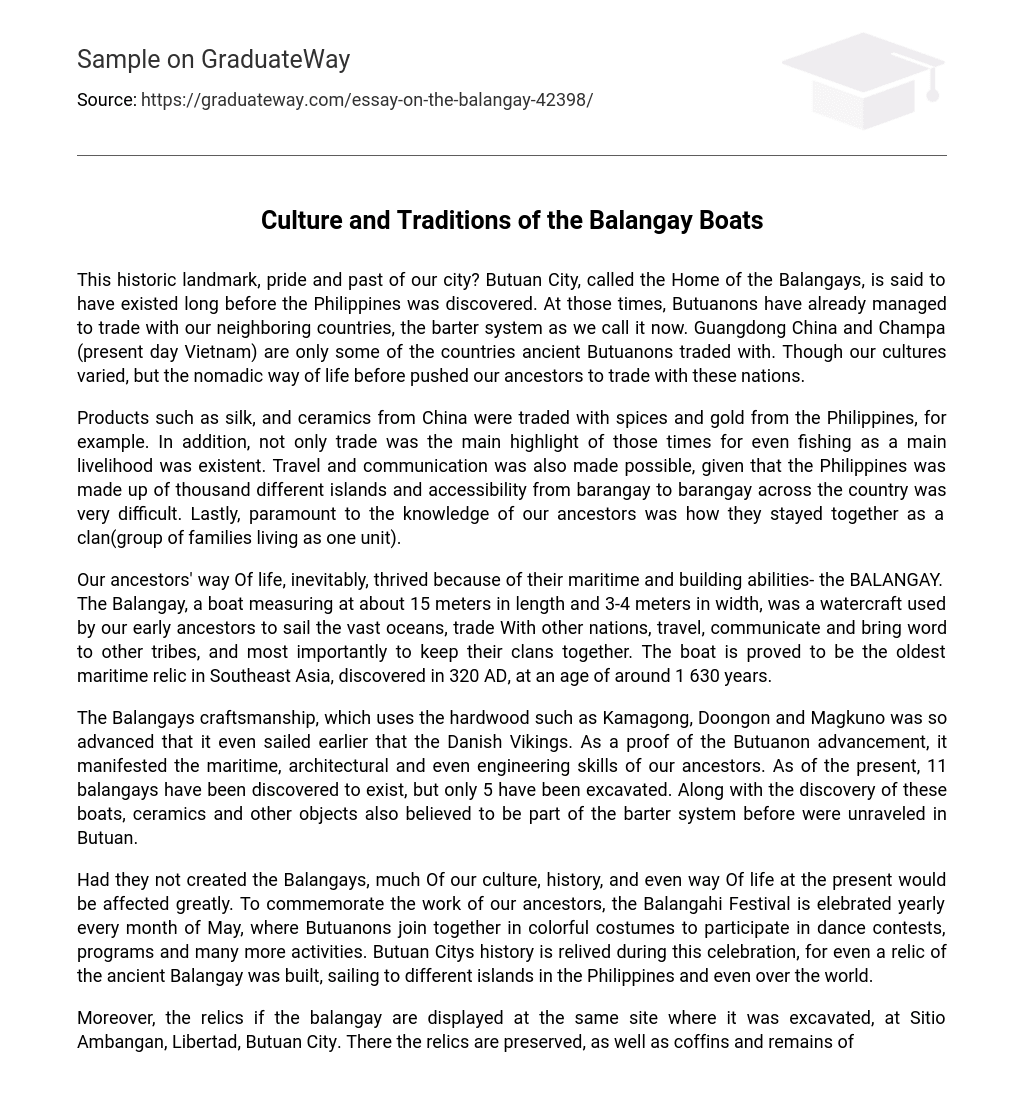This historic landmark, pride and past of our city? Butuan City, called the Home of the Balangays, is said to have existed long before the Philippines was discovered. At those times, Butuanons have already managed to trade with our neighboring countries, the barter system as we call it now. Guangdong China and Champa (present day Vietnam) are only some of the countries ancient Butuanons traded with. Though our cultures varied, but the nomadic way of life before pushed our ancestors to trade with these nations.
Products such as silk, and ceramics from China were traded with spices and gold from the Philippines, for example. In addition, not only trade was the main highlight of those times for even fishing as a main livelihood was existent. Travel and communication was also made possible, given that the Philippines was made up of thousand different islands and accessibility from barangay to barangay across the country was very difficult. Lastly, paramount to the knowledge of our ancestors was how they stayed together as a clan(group of families living as one unit).
Our ancestors’ way Of life, inevitably, thrived because of their maritime and building abilities- the BALANGAY. The Balangay, a boat measuring at about 15 meters in length and 3-4 meters in width, was a watercraft used by our early ancestors to sail the vast oceans, trade With other nations, travel, communicate and bring word to other tribes, and most importantly to keep their clans together. The boat is proved to be the oldest maritime relic in Southeast Asia, discovered in 320 AD, at an age of around 1 630 years.
The Balangays craftsmanship, which uses the hardwood such as Kamagong, Doongon and Magkuno was so advanced that it even sailed earlier that the Danish Vikings. As a proof of the Butuanon advancement, it manifested the maritime, architectural and even engineering skills of our ancestors. As of the present, 11 balangays have been discovered to exist, but only 5 have been excavated. Along with the discovery of these boats, ceramics and other objects also believed to be part of the barter system before were unraveled in Butuan.
Had they not created the Balangays, much Of our culture, history, and even way Of life at the present would be affected greatly. To commemorate the work of our ancestors, the Balangahi Festival is elebrated yearly every month of May, where Butuanons join together in colorful costumes to participate in dance contests, programs and many more activities. Butuan Citys history is relived during this celebration, for even a relic of the ancient Balangay was built, sailing to different islands in the Philippines and even over the world.
Moreover, the relics if the balangay are displayed at the same site where it was excavated, at Sitio Ambangan, Libertad, Butuan City. There the relics are preserved, as well as coffins and remains of the ancient people explained to be the early Butuanon people. Almost at every curb or corner in the surrounding area of the Butuan City Hall, relics and sculptures of Butuan’s history are displayed, where everybody can see it. The Balangay, though it is too old to be revived, stays a symbol of Butuan City’s history, advancement, and role as the commercial, population, cultural, and even religious center of the country.
Butuan City, though not as large as other cities, is a trademark that even then, our ancestors strived to make a good living- by building their boats they promoted a higher standard of living; by trading with their neighbors they mproved their wealth; by using that wealth they had a greater chance of survival, and; by their survival alone they created a great future, a brand new hope and a reminder to the generations to come that they can break the barriers between man and nature, to what is now the present civilization.
The discovery of the Balangays present us with both a lesson a challenge: that we should be open minded and concerned enough about the past, that whatever we have and whatever we are now is a product of what our ancestors created and contributed to our city in their time and that we should e passionate to preserve the culture and the traditions that they have passed on to us- that we should take part in promoting the wonder of their work.





